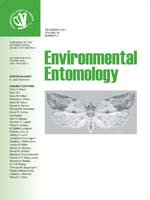The light brown apple moth, Epiphyas postvittana (Walker), is native to Australia and first was detected in California in 2006. In this study, we regularly sampled populations on Leptospermum laevigatum (Gaertn.) F.Muell. at two sites in San Francisco and on Arctostaphylos densiflora M.S. Baker at two sites in Santa Cruz over a 2-yr period to monitor the abundance, age structure, and voltinism of this potential pest in relation to degree-days. Our results showed that larval abundance declined at two sites, cycled with peaks in midsummer at one site, and remained steady at one site. Generations overlapped at all four sites with the full range of larval instars being present for most of the year, although populations during the winter were predominantly mid to late instars. Accumulated degree-days predict an average of 3.27 and 4.58 generations per year in San Francisco and Santa Cruz, respectively, which matched our observed peaks of late-instar larvae in the field remarkably well. This new information on light brown apple moth phenology in coastal California will be invaluable for the development of effective monitoring and management strategies for this new invader in the studied region.
How to translate text using browser tools
1 December 2011
Abundance, Age Structure, and Voltinism of Light Brown Apple MothPopulations in California
L. P. Buergi,
W. J. Roltsch,
N. J. Mills
ACCESS THE FULL ARTICLE
It is not available for individual sale.
This article is only available to subscribers.
It is not available for individual sale.
It is not available for individual sale.

Environmental Entomology
Vol. 40 • No. 6
December 2011
Vol. 40 • No. 6
December 2011
degree-days
Epiphyas postvittana
invasive species
phenology




